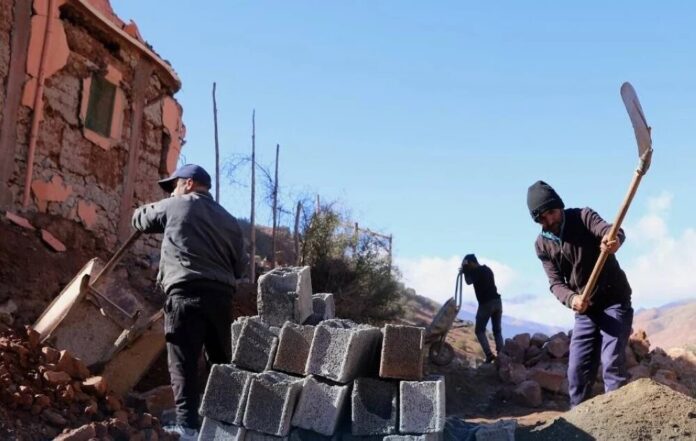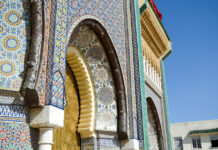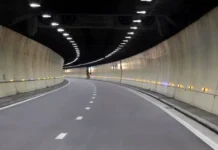Nearly a year after the devastating earthquake struck the Al Haouz province on September 8, 2023, reconstruction efforts are steadily progressing despite the immense geographical challenges. In this mountainous region, every step forward is met with natural obstacles—unstable terrain, the looming threat of landslides, deep ravines, and the unpredictable behavior of nearby rivers.
One of the most striking examples of this struggle is the village of Salamat, located within the remote commune of Anougal. Perched precariously above hazardous ravines, Salamat saw fourteen homes relocated to safer ground. For residents like Ali, a 42-year-old mason and father, the decision to abandon the original village layout was painful—but ultimately seen as necessary for survival.
The transformation of Salamat didn’t happen overnight. It took months of close collaboration between villagers and local authorities, hampered at times by delays in land allocation. But this ground-level coordination allowed work to resume in a project that had been falling behind.
Hassan Ighighi, the official overseeing the reconstruction effort, confirmed that Salamat had been designated as a high-risk area. Twenty-eight families have now been resettled in a newly developed site, designed with an integrated architectural approach to ensure long-term safety and sustainability. As of now, the project is 80 percent complete, with full completion expected by the end of July.
Salamat isn’t alone. Fourteen other hamlets throughout the province have been flagged for geological instability, where new construction is either banned or tightly regulated. Altogether, more than 724 families have been moved from dangerous zones prone to rockfalls, landslides, and soil erosion.
In nearby Aït Ouzkri, erosion forced the evacuation of twenty-one homes. Though the decision to relocate was difficult, most residents saw it as the only viable option to protect both their safety and their deep-rooted ties to the land.
In the commune of Asni, the village of Tansghart had to be entirely moved. Geological tests revealed a level of ground instability that made reconstruction impossible. Today, the residents have settled into a newly built village. Among them is Haj Ibrahim, a blind man in his seventies, who speaks with heartfelt gratitude about what he calls a new beginning.
In Amghras, Mohamed, a seasonal laborer who once thought he’d have to leave the region forever after losing his home, was able to stay thanks to the government’s support. Thirty-five homes were relocated to a safer area, shielded from landslide threats.
In line with royal directives, displaced families continue to receive government assistance: a monthly stipend of 2,500 dirhams for rent or temporary housing, as well as reconstruction grants that can reach up to 140,000 dirhams.
On the ground, engineers are carefully supervising construction to ensure all buildings meet seismic safety standards. Charkaoui Minaoui, who oversees technical operations, described a meticulous process that starts with planning and ends with the issuing of habitation certificates. New sites are selected based on strict criteria, ensuring access to essential services and infrastructure.
According to the Al Haouz prefecture, the overall reconstruction rate stands at 84 percent, with more than 21,954 homes rebuilt to high safety and quality standards. Emergency tents, once a symbol of survival, have now been entirely replaced by permanent housing. In the months ahead, the progress is expected to surpass 90 percent, thanks in part to tailored solutions for families still living in hard-to-reach areas.





